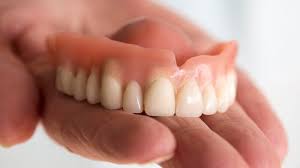Preserving Beauty: Transformative Cracked Marble Floor Repairs
Asenqua Tech is reader-supported. When you buy through links on our site, we may earn an affiliate commission.
Marble floors are a timeless symbol of elegance and luxury in interior design. The smooth, polished surface adds a touch of sophistication to any space. However, over time, even the most well-maintained marble floors may develop cracks, diminishing their beauty and appeal.
In this article, we will explore the various causes of cracked marble floors and delve into the transformative techniques used in repairing and preserving their exquisite beauty.
Understanding the Causes of Cracked Marble Floors
1. Natural Wear and Tear
Marble, a metamorphic rock composed of recrystallized carbonate minerals, is inherently susceptible to wear and tear. Daily foot traffic, furniture movement, and other environmental factors contribute to the gradual deterioration of the marble’s surface, resulting in cracks.
2. Subfloor Issues
Cracks in marble floors can also stem from problems with the subfloor. Uneven surfaces, shifting foundations, or inadequate support can exert pressure on the marble, causing it to crack over time. Addressing subfloor issues is crucial for long-term preservation.
3. Moisture and Humidity
Marble is porous and can absorb moisture, leading to expansion and contraction. Fluctuations in humidity levels can exacerbate this effect, causing stress on the marble and resulting in cracks. Proper moisture management is essential to prevent such damage.
4. Chemical Damage
Certain cleaning agents and acidic substances can harm the protective seal on marble, making it more susceptible to cracking. Understanding the right cleaning methods and using appropriate products is crucial in preventing chemical damage.
The Art of Marble Floor Inspection
Before embarking on any repair process, a thorough inspection of the cracked marble floor is essential. A professional inspection helps identify the root causes of the cracks, allowing for a tailored and effective repair strategy. Here are the key steps involved in a comprehensive marble floor inspection:
1. Surface Examination
Inspecting the surface of the marble involves identifying visible cracks, scratches, or any signs of wear. Understanding the extent of the surface damage helps in planning the appropriate repair methods.
2. Subfloor Analysis
Examining the subfloor beneath the marble is crucial in identifying structural issues that may contribute to the cracking. This step often requires the expertise of a structural engineer to ensure a holistic approach to repairs.
3. Moisture Testing
Assessing the moisture content in the marble is essential for understanding the impact of environmental factors on its condition. Moisture testing helps in determining if water-related issues are contributing to the cracks.
4. Chemical Evaluation
A careful examination of the chemicals and cleaning agents previously used on the marble is necessary to gauge potential damage. Identifying the presence of acidic substances helps in selecting suitable cleaning and restoration products.
Transformative Techniques for Cracked Marble Floor Repairs
Once the inspection is complete, it’s time to explore the transformative techniques used by skilled professionals to repair and restore cracked marble floors.
Cracked marble floor repair not only address the visible damage but also work towards preventing future issues, ensuring the long-lasting beauty of the marble.

1. Filling and Patching
Filling and patching are common techniques used to address minor cracks and surface imperfections. Epoxy-based fillers, color-matched to the marble, are carefully applied to seamlessly blend with the natural pattern. This technique not only restores the aesthetic appeal but also reinforces the structural integrity of the marble.
2. Honing and Polishing
Honing involves the removal of a thin layer from the marble surface, eliminating minor scratches and imperfections. This process is followed by polishing, which restores the marble’s natural shine. Honing and polishing not only address existing cracks but also provide a protective layer against future damage.
3. Structural Repairs
For more severe cracks caused by subfloor issues, structural repairs may be necessary. This involves addressing the underlying problems with the subfloor, providing additional support, and ensuring a stable foundation for the marble. Structural repairs are crucial for preventing recurring cracks.
4. Moisture Mitigation
To combat moisture-related issues, effective moisture mitigation techniques are employed. This may include the application of sealants to reduce the marble’s porosity, improving drainage systems to redirect water away from the marble, and ensuring proper ventilation in the space.
5. Chemical Restoration
In cases where chemical damage has occurred, a chemical restoration process is implemented. This involves carefully removing damaged layers, neutralizing acidic residues, and applying protective coatings to prevent future chemical harm.
DIY vs. Professional Restoration: Making the Right Choice
While some minor cracks in marble floors may be addressed through do-it-yourself (DIY) methods, professional restoration is often the preferred choice for comprehensive repairs. Here’s a comparison to help you make the right decision:
DIY Marble Floor Repairs
- Cost-Effective: DIY methods are generally more budget-friendly for minor repairs.
- Limited Expertise: DIY approaches may lack the precision and expertise needed for complex issues.
- Risk of Further Damage: Without professional guidance, there’s a risk of unintentional damage or improper repair methods.
Professional Marble Floor Restoration
- Expertise and Experience: Professionals bring specialized knowledge and experience to address a wide range of issues.
- Holistic Approach: Professional services often include thorough inspections and comprehensive solutions for long-term results.
- Time-Efficient: Professionals can complete repairs efficiently, minimizing downtime and inconvenience.
Maintaining the Beauty: Tips for Marble Floor Care
Preserving the beauty of repaired marble floors requires ongoing care and maintenance. Implementing the following tips will help ensure the longevity of your marble flooring:
1. Regular Cleaning
Adopt a regular cleaning routine using mild, pH-neutral cleaners specifically designed for marble. Avoid acidic or abrasive cleaners that can compromise the protective seal.
2. Protective Mats and Furniture Pads
Place mats at entry points to trap dirt and prevent scratches. Additionally, use furniture pads to minimize the impact of heavy furniture on the marble surface.
3. Prompt Spill Cleanup
Immediately clean up any spills to prevent staining and moisture absorption. Use a soft, absorbent cloth and avoid harsh cleaning agents.
4. Periodic Sealing
Depending on the type of marble and its use, periodic resealing may be necessary. Consult with professionals to determine the appropriate sealing schedule for your marble floors.
5. Regular Inspections
Schedule regular inspections by professionals to identify and address potential issues before they escalate. Early intervention can prevent extensive damage.
Conclusion
In conclusion, cracked marble floors can be transformed and restored to their original beauty through a combination of skilled techniques and thoughtful maintenance. Understanding the causes of cracks, conducting thorough inspections, and choosing the right repair methods are crucial steps in preserving the timeless elegance of marble flooring.
Whether opting for DIY repairs or seeking professional restoration, the key is to prioritize the long-term health and beauty of your marble floors. By doing so, you can continue to enjoy the luxurious allure of marble in your living spaces for years to come.







